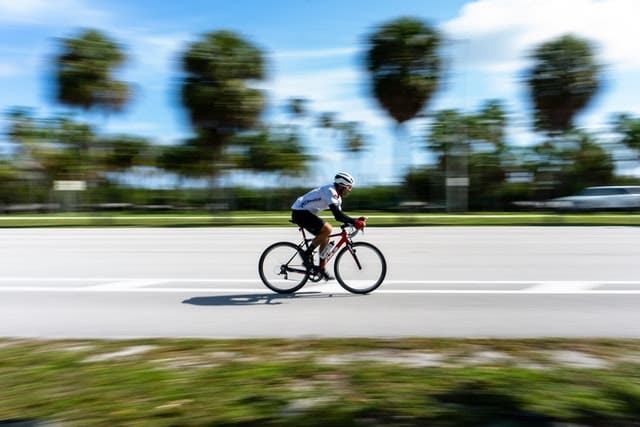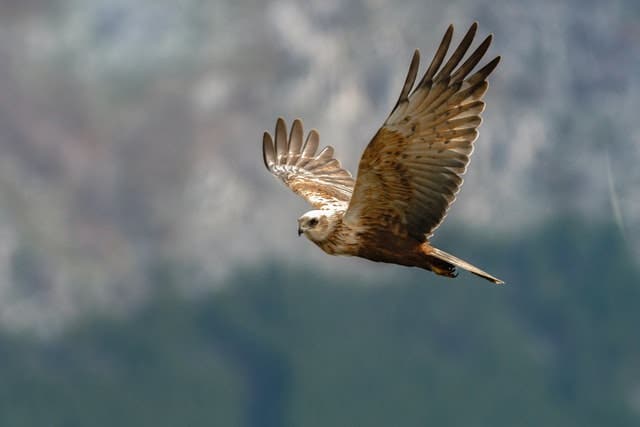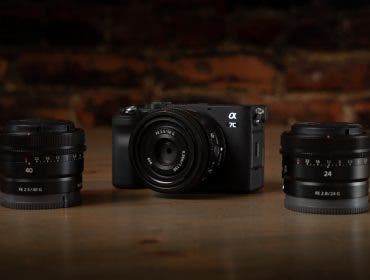Have you ever seen a photo of a racing animal, vehicle, or athlete where the moving subject is in perfect focus, frozen against a blurred background? Those images convey the heart-pumping nature of motion, and they take advantage of a great technique called the pan shot, or panning photography.
Panning shots are visually engaging because of the juxtaposition of a sharp subject against a blurred background. There’s no quicker and easier way to imply the feeling of movement and speed in action photography than by taking panning photos.
If you’d like to try incorporating the art of the pan shot into your photography, take a look at these three simple steps. With our cheat sheet, you’ll master this valuable technique in no time.
1. Pick a great location with plenty of moving subjects

To get started with motion-blur techniques like panning photography, you’ll need some fast-moving subjects. Eventually you may be interested in action shots of animals while on safari or capturing birds in flight but for now, predictable motion is key.
Start by heading to a busy part of town or a popular bike path. Any place guaranteed to have a constant flow of moving subjects will work perfectly.
Set yourself up with the path in front of you, so the subjects will move from left to right or right to left. This photography technique doesn’t work when subjects move toward you or away from you.
Adjust your camera settings for the pan shot technique
Some camera settings work better than others. As you become more experienced with action photography and camera panning, you may develop a few favorite settings and technique but for now, let’s start simple.
Choose shutter priority mode
Shooting in shutter priority mode tells your camera that your biggest concern is shutter speed. The camera will select the appropriate aperture to go along with the shutter speed you choose. Even as lighting conditions change, the camera will keep up with you and make sure your shots are well exposed.
Select a slow shutter speed
Photographing moving subjects against a blurred background requires that you drag the shutter a bit. If you use too fast a shutter speed, the subject and the background will both be frozen in perfect sharpness. By choosing a slower shutter speed, you can ensure that your camera’s movement will blur the background.
The exact shutter speed you choose will depend on the speed of the subject, your distance from them, and the available light. In other words, there’s no perfect shutter speed for all scenarios. Start with a shutter speed in the range of 1/30 to 1/100 and make adjustments as you go.
Set your autofocus mode for continuous shooting
Manual focus is a great option as you gain more experience but for now, set your camera to autofocus and select the continuous focusing mode. If you have a Nikon or a Sony, you’ll want the setting called AF-C. If you have a Canon, choose AI-Servo. This will ensure that your autofocus system will track the subject as it moves through the frame.
3. Move your camera with the subject

Now that you’re all set with positioning and camera settings, hold your camera firmly so you can move smoothly to track the motion of your subject. You can also use a tripod if you have a panning tripod head, but shooting handheld will work just fine.
As a subject enters your field of view, lock focus on them by pressing the shutter button halfway. Press the shutter to take the image while sweeping your camera along with the subject’s motion. It may take some time before you’re happy with the results, but the more you shoot, the better you’ll get.
Make adjustments
If you notice that the background isn’t very blurred in your shots, set your camera to a slower shutter speed. If you notice that the subject and background are very blurry, you may need a slightly faster shutter speed.
Many photographers have the most luck with panning techniques when they shoot in burst mode, so feel free to fire off a few shots of each subject by keeping the shutter depressed.
Once you’ve mastered panning photography with cyclists and other human subjects, you’ll be ready to try your hand at capturing exotic animals and birds in motion!
![Mastering the Pan Shot [Photographer's Guide] - 42West, Adorama](https://www.adorama.com/alc/wp-content/uploads/2021/08/Mastering-the-Pan-Shot-Photographers-Guide-825x465.jpg)
![Mastering the Pan Shot [Photographer's Guide] - 42West, Adorama](https://www.adorama.com/alc/wp-content/uploads/2021/08/Mastering-the-Pan-Shot-Photographers-Guide.jpg)




